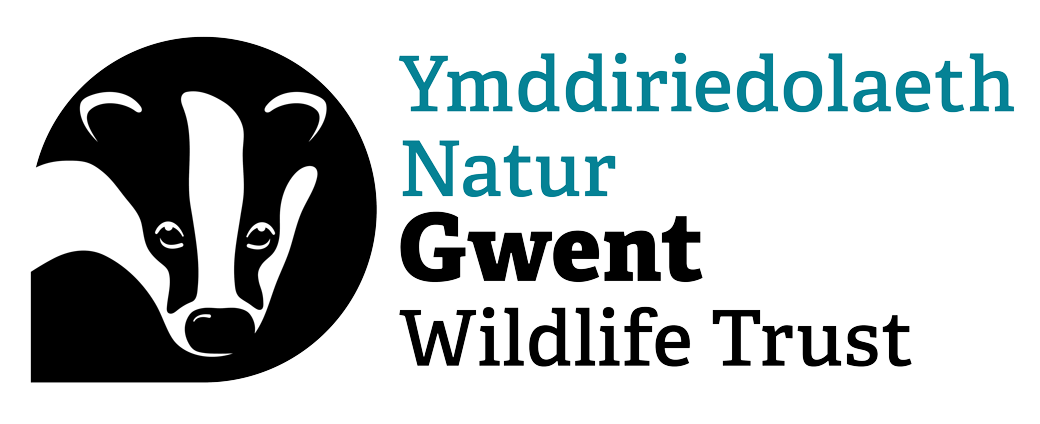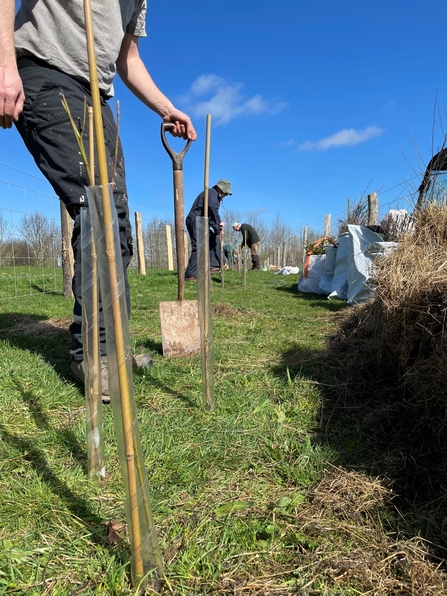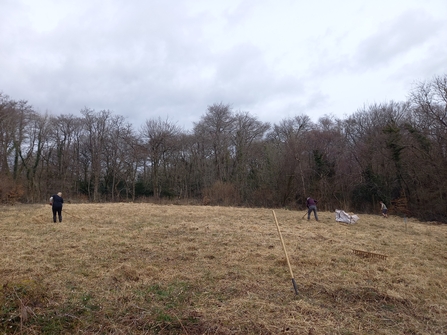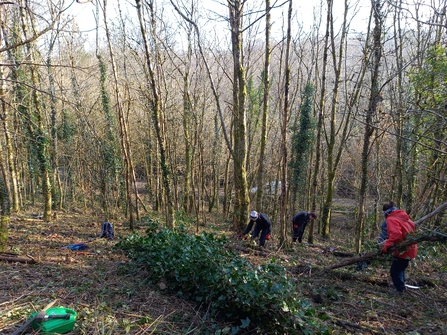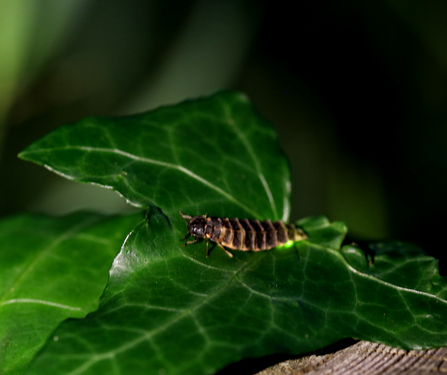From the Usk to Wye Reserves
At our Wyeswood Common Nature Reserve, volunteers have planted 250m of hedges, totaling 1250 trees! A mix of native hedgerow species were chosen, including blackthorn, hawthorn, hazel, oak, holly and dog rose. These new hedges were planted in new double fenced areas, funded by Nature Networks Fund 3, as well as a 45m stretch next to our livestock handling areas to provide some shelter and shade.
Hedgerows provide countless benefits for wildlife as well as shelter and food for our livestock. They act as vital corridors for wildlife to transverse across the landscape, allowing the dispersal of tree dependent species like pine martens. They provide areas of dense, mixed woody vegetation, creating fantastic nesting habitats for birds, and mammals such as dormice. When planted with a diverse range of native species, they provide a food source throughout the year.
The verge along the bottom of hedgerows, protected from cutting and grazing, adds to the ecological importance of hedges as it allows other plants to thrive, increasing the biodiversity of the area.
As well as direct benefits for wildlife, they also store carbon, improve air quality by capturing pollution particles, reduce silt in water ways and slow flood water by increasing infiltration on field boundaries.
All in all, these new hedges are a great addition to the reserve!
